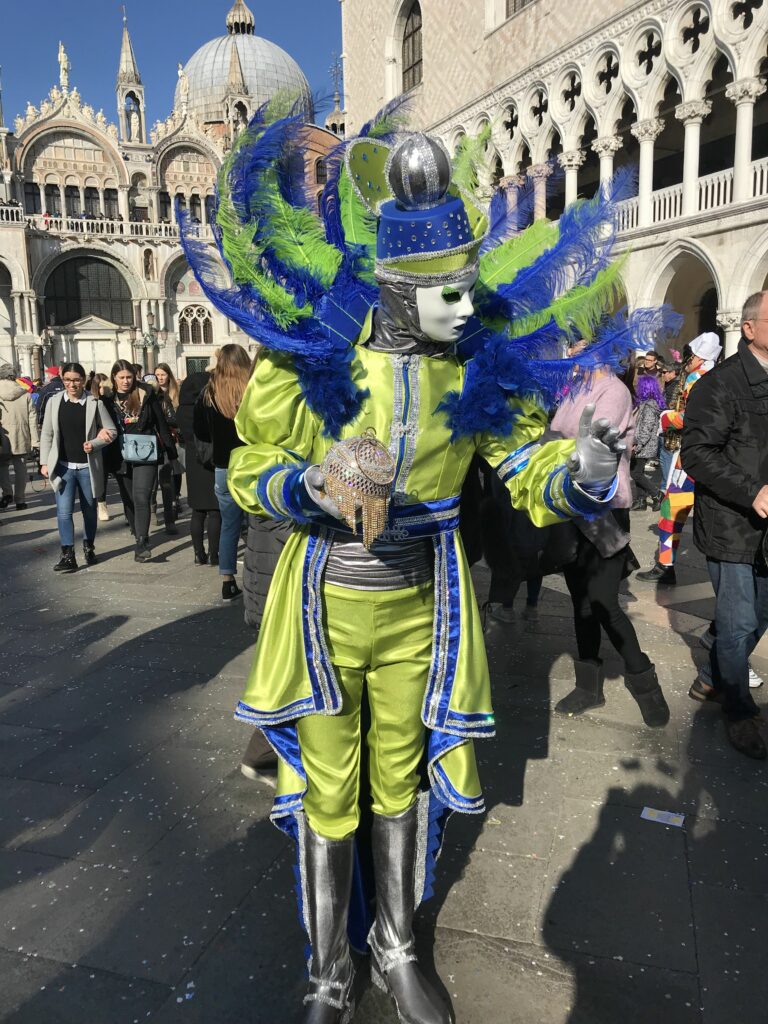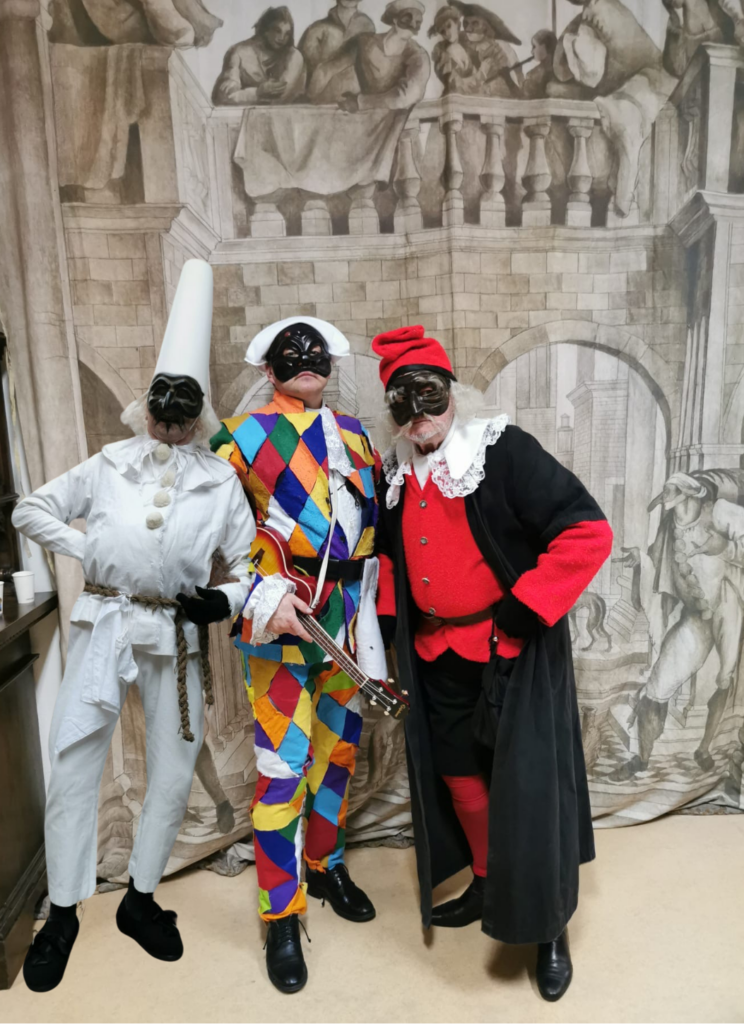Steeped in history and shrouded in mystery, the Carnival in Venice 2024 is a dazzling celebration that has mesmerized the world for centuries, precisely for more than 700 years to date. Set against the backdrop of the iconic city, this grand event, scheduled this year from January 27 to February 13, offers a unique blend of art expression, cultural significance, and vibrant traditions. Let’s discover the origins of the Carnival, highlight the iconic characters that grace the festivities, and admire the unique perspective offered by the waterways of Venice.
Carnival in Venice 2024 – a historical tapestry since the 11th century
The roots of the Carnival of Venice can be traced back to the 11th century, when the Venetian Republic initiated a day of celebration marking the commencement of Lent. However, it was during the Renaissance period that the Carnival underwent a transformative evolution. As the city flourished as a centre of commerce and culture, the Carnival became a lavish spectacle, reflecting the opulence and creativity of the time. The masked revelry and elaborate costumes that define the Carnival today began to take shape, setting the stage for an event that would capture the imagination of generations to come.
Beyond being a period of indulgence before the solemnity of Lent, the Carnival of Venice holds deep cultural and historical significance. It served as a temporary escape from the rigid social structures of the time, allowing Venetians to express themselves freely behind the anonymity of masks and costumes. The Carnival became a space where societal norms were momentarily suspended, and people from all walks of life could revel in the joyous spirit of unity and creativity.
Although, the history of Venetian masks was initially separate from the Carnival’s history. The use of masks was not confined to the Carnival season; in earlier times, Venetians masked themselves for many months each year. Discover more in the next paragraph!
Carnival in Venice 2024 – unmasking centuries of tradition
The Carnival is nowadays synonymous with the presence of iconic characters that wander the narrow streets and picturesque squares of Venice. The masquerade tradition, closely associated with the artisanship of the “mascareri,” has a rich history. In the 15th century, the Venetian Republic officially recognized the craft of the mascareri, specialized artisans in the creation of papier-mâché masks. This craftsmanship, passed down through generations, was associated with painters and linked to the work of “targheri” who imprinted painted faces on stucco. Together, these trades constituted one of Venice’s oldest professions!
The masks, crafted from papier-mâché and adorned with precious stones, colours, and fabrics, immediately became synonymous with freedom of expression, transgression of the rules of the Serenissima Republic, play, and the opportunity to become anyone one desired.

At the beginning, masks were not only confined to the Carnival that we know today.
Firstly because the Carnival was originally extending from December 26 to Ash Wednesday. And masks were worn throughout the year as a “precaution” in risky affairs such as gambling or shady exchanges between merchants and smugglers. Those in disguise could play a role and could not be arrested for actions on the fringes of legality. The history of masks thus accompanied various needs during the Serenissima Republic. Despite more restrictive laws, the mask persisted for centuries as a Venetian version of the Roman “panem et circenses,” a tolerated way of letting tensions between classes resolve without extreme episodes.
Over time, various social spheres were affected by laws either prohibiting or mandating mask-wearing. Laws were enacted against wearing masks in casinos, during the night, in monasteries. Simultaneously, masks were mandatory for women attending theatres but forbidden for unmarried girls.
As the years passed, mask-wearing was allowed only during the Carnival and special banquets. The tradition fell into disuse with the fall of the Serenissima in 1797 and remained dormant in Venice for almost 200 years. The Austrian government prohibited mask use, leading to a period of decline. However, with the second Austrian government, mask use was permitted again during Carnival days, and even today, masks continue to be part of a widespread artisanal and cultural tradition in Venice, narrating its history.
Some of the traditional Venetian masks
As mentioned earlier, the history of masks is closely intertwined with Venetian life. Great celebrities, fictional characters, or noble professions were immortalized in the city’s iconography.
- Giacomo Casanova: adventurer, intellectual, and Venetian libertine, a frequent visitor to the city’s prestigious and ambiguous salons, often depicted masked.
- The Plague Doctor: while the original purpose of the plague doctor’s mask was sanitary, its distinctive and suggestive appearance (beak-like nose that filled with aromatic substances such as herbs, spices, or vinegar) became a traditional mask.
- La Baùta: completed with a tricorn hat and cape, the Baùta is the quintessential Venetian mask, worn by men and women on various occasions in the past. It could be plain white or richly adorned, but it remained one of the Carnival’s protagonists.
- Moretta, a French-origin oval-shaped mask covered in dark velvet that became popular among Venetian ladies. Its peculiarity was that it was held in place by biting a small button between the teeth, rendering the wearer mute.
Commedia dell’arte masks
At the heart of the Carnival lies another mask tradition, the “Commedia dell’arte”, a form of improvised theatre that emerged in Italy during the 16th century by the Italian playwright Carlo Goldoni. This theatrical style, characterized by masked performers, archetypal characters, and witty dialogue, became an integral part of the Carnival’s cultural fabric. The Commedia dell’arte brought a sense of theatricality and drama to the festivities, elevating the Carnival beyond a simple celebration into a performance art that delighted and captivated audiences.

The masked characters became timeless symbols of the Carnival’s enchantment: the Harlequin, with his chequered costume, Pulcinella with his distinctive hunchback and white costume, and the charming Colombina, often portrayed as a maidservant, bring the streets to life with their playful antics and interactions with the crowd.
Carnival in Venice 2024: a feast for the senses
The Carnival in Venice 2024 is a time when the city transforms into a lively stage where various events and activities unfold. Street performances featuring musicians, jugglers, and actors create an electrifying atmosphere. Masquerade balls, a hallmark of the Carnival, transport participants to a bygone era of opulence and sophistication. The Grand Canal, adorned with elaborately decorated gondolas, becomes a picturesque backdrop for the festivities, offering a stunning visual spectacle that adds to the overall allure of the event.
Boat Excursions: a unique Carnival experience!
One of the distinctive features of the Venice Carnival is the surge of people taking boat excursions to explore the city’s enchanting waterways. The canals, usually teeming with gondolas and boats, take on a magical quality during the Carnival. Many revelers seize the opportunity to enjoy the festivities from a different perspective, gliding along the canals in traditional Venetian boats. This experience not only provides a unique vantage point for admiring the costumes and decorations but also adds an extra layer of magic to the Carnival, making it an unforgettable experience. Moreover, embarking on a boat tour can take you also to the other islands of the Venetian Lagoon, everyone has its own festivities and tradition!

